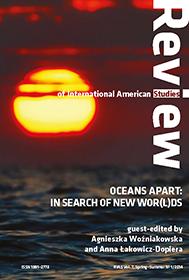Creolization in Lafcadio Hearn’s New Orleans and Martinique Writings
Creolization in Lafcadio Hearn’s New Orleans and Martinique Writings
Author(s): Hitomi NabaeSubject(s): Anthropology, Social Sciences, Language and Literature Studies, Studies of Literature, Comparative Study of Literature, Other Language Literature, Culture and social structure
Published by: Wydawnictwo Uniwersytetu Śląskiego
Summary/Abstract: The word tsunami, now commonly used throughout the world, was, according to the OED, first used in the 1897 story ‘A Living God’ written by Lafcadio Hearn. He wrote this story in Japan soon after reading the breaking news about the tsunami that had killed more than 20,000 people in North Japan. Having been trained as a journalist for twenty years in America, it was no wonder that he responded so quickly to such a catastrophe. Moreover, his first novel was also about oceanic catastrophe: a decade earlier in New Orleans he had written Chita, a story about the Gulf storm of 1856 which had swept away a resort island and swallowed up its inhabitants and vacationers. While Hearn obviously utilizes the catastrophe to dramatize the miraculous moment of survival, he also experiments with his narrative voice to render reality more powerfully. These two stories of oceanic catastrophe well illustrate how he turns journalistic realism into legendary myth by framing it within cross-cultural allegories, which arguably is an essential technique that he consciously crafted and developed so as to effectively address the multi-cultural readers of the world.
Journal: Review of International American Studies
- Issue Year: 7/2014
- Issue No: 1
- Page Range: 131-150
- Page Count: 20
- Language: English

